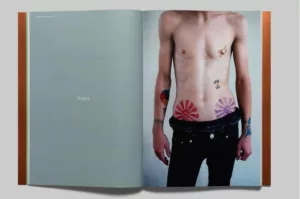[Evan offers detailed reviews of two books for the photography enthusiast in your life–one an examination of how we interact and ascribe meaning to images, and the other a revival of Henri Cartier-Bresson’s famed “photography bible”. — the Artblog editors]
Spring is finally (maybe) here, and with it comes a time to look at the world around us again as new. Fitting, then, that two books on photography have recently come into my hands and eyes, asking me to see and think more actively in very different ways. One is a contemporary and theoretical analysis of the current state of the medium; the other, one of the most famous pillars in the history of photographic publication, reprinted for the first time since 1952. Can you tell I’m excited?
Trading pictures for words and vice versa
Words Not Spent Today Buy Smaller Images Tomorrow: Essays on the Present and Future of Photography, by David Levi Strauss. Aperture Foundation, New York, published May 2014, softbound, 192 pages, 25 color and black-and-white images, 978-1-59711-271-0, $29.99
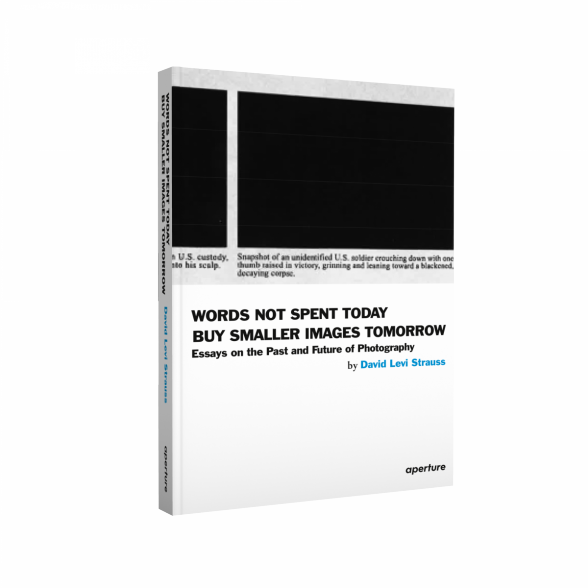
Prominent writer and professor David Levi Strauss makes his contribution to Aperture’s Aperture Ideas: Writers and Artists on Photography series of books, joining a list of publications including Tod Papageorge’s essential Core Curriculum. In this outing, he approaches the mammoth task of deciphering photography’s present and future direction by writing short essays on individual artists, most successfully focusing on underrepresented demographics–notably women and Latino photographers such as Jenny Holzer, Helen Levitt, and Alfredo Jaar.
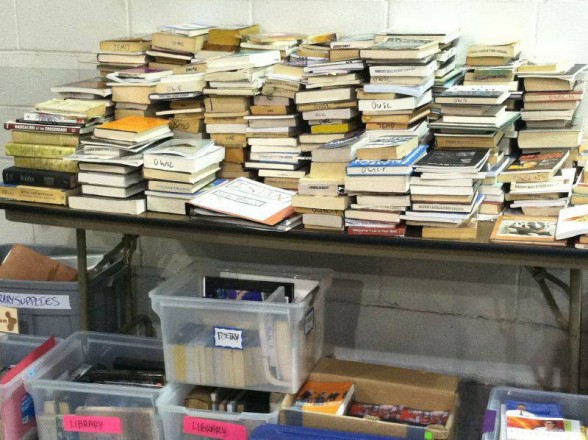
Especially poignant is the inclusion of loaded political images from Abu Ghraib; the White House Situation Room; and the Instagram account of former NYC mayor Michael Bloomberg, among others. While Strauss avoids a single definitive statement on the future of photography, he is ardent that we must stop reducing all images to information and resist control through images.
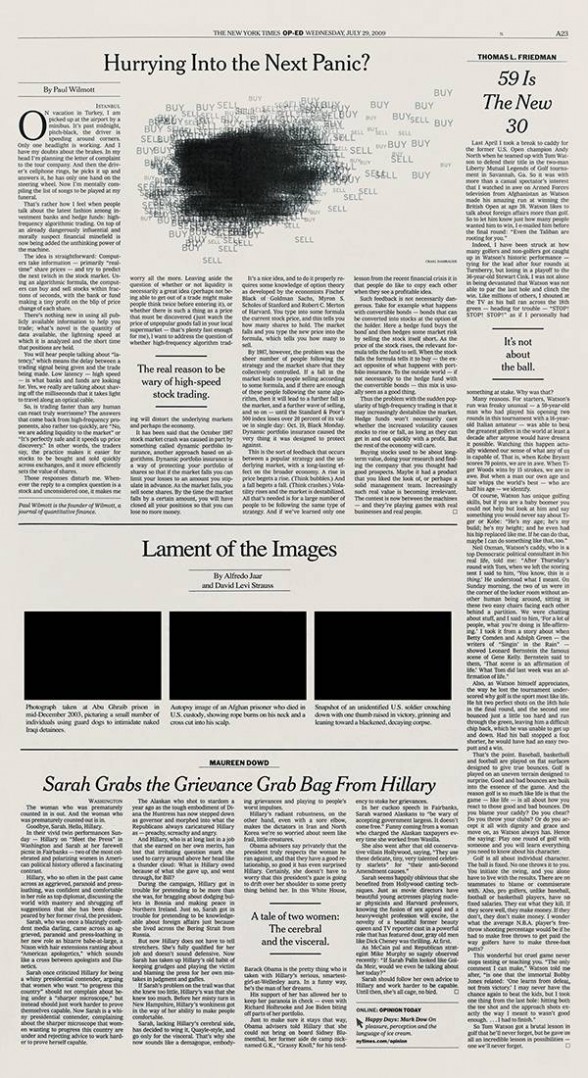
The book’s curious title comes from a quote by Frederick Sommer, a photographer and mentor of Strauss whose influence can be felt throughout the pages of these essays. Sommer, a Brazilian-born photographer famous for his desert landscapes, which he sometimes called “constellations,” thought of photography beyond its intrinsic properties and more about its catalytic function. Strauss mentions being fascinated by the idea of words as currency for images, and how these two forms of description coincide. The meeting place of these two is constantly changing as technology does, altered further by our abundant intake of information and the increasingly political nature of how photographs are used.
Although the ideas can be lofty, the language remains clear and driven, making this a worthwhile addition to the library of anyone interested in how pictures function not just within fine arts, but in the greater social and political sphere as well.
The “photographer’s bible”–a rare reprint to original specs
The Decisive Moment, by Henri Cartier-Bresson, Steidl Verlag, Germany, published February 2015, clothbound in slipcase, 160+48 booklet pages, 126 black-and-white images, 978-3-86930-788-6, $125
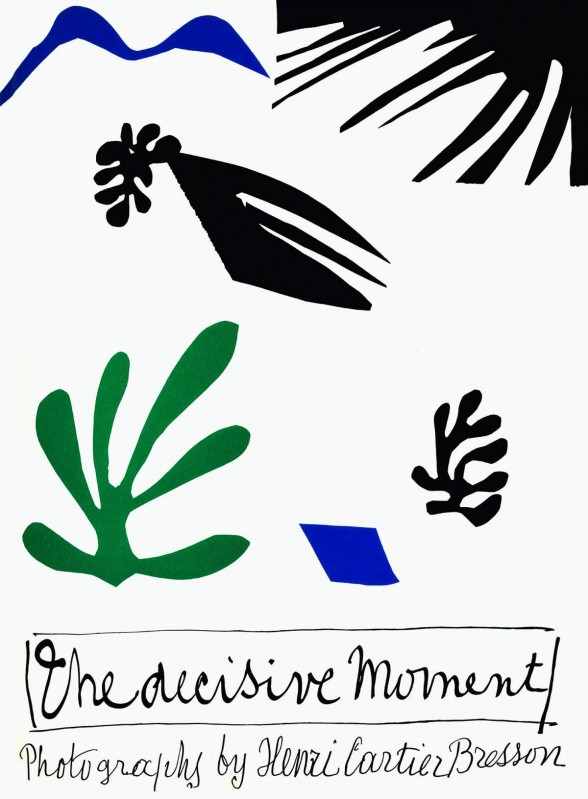
Published originally in France in 1952 under the title Images a la Sauvette, Cartier-Bresson’s collection was printed in English for American publication shortly after. By now, the idea of Cartier-Bresson’s work has become almost more pervasive than the work in the actual book: a staple in the lectures of every single photography professor on Earth. This was, and is, more than a single man’s way of taking pictures; it has grown into an entire ideology of seeing.
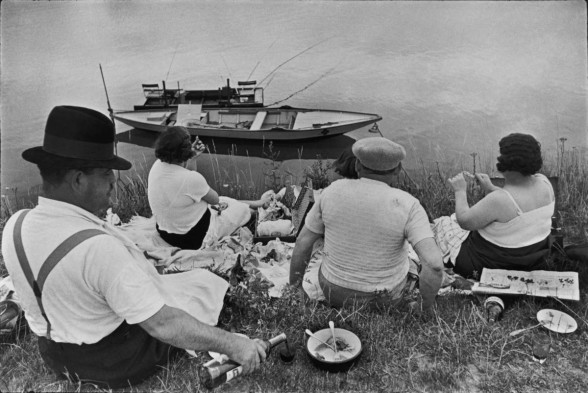
So why am I writing about this book 63 years later, even if it is considered a “bible for photographers”? Well, because actual copies were only printed once, and now go for a minimum of $500 if you can find one; copies in good condition command thousands. If you aren’t in the financial position to buy an original version, you might see one behind glass in a major museum library, opened to a single spread. That was the case until this year, when German publishers Steidl revived the project for our generation.
Reprinted to the exact specification of the original, including Henri Matisse’s collage cover design, Steidl’s care and craftsmanship is astounding. At 11.5” by 15”, it’s actually too large for my bookshelf. The spreads are sized according to the dimensions of the framelines of Cartier-Bresson’s beloved Leica camera, allowing for a single large image, two vertical images, or four smaller horizontal images to fit on each spread. The sequencing is seamless and affecting–it is one of the most immersive experiences I have ever had with a book. The book’s physical presence and high image quality demands not only respect for the work inside, but for it to be treated as a work of art in and of itself.
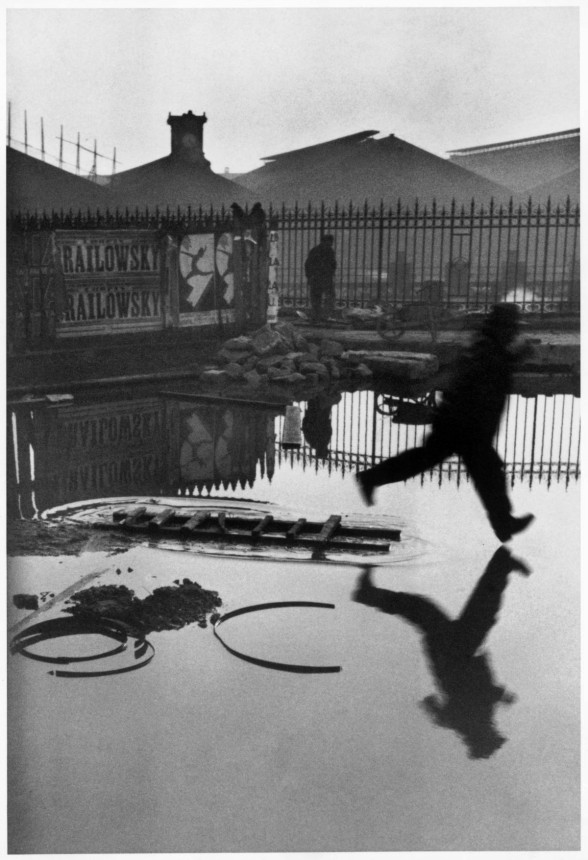
Oh, and the work. In Cartier-Bresson’s words, “to photograph: it is to put on the same line of sight the head, the eye and the heart.” His pictures are compositionally challenging and ultimately rewarding, and never devoid of emotion. Here is a man who understood exactly how the camera and the photographer function in relation to the world around him–not only that, but how to make images that accurately express those relationships. His reputation is deserved; maybe not as unimpeachable as fact, but as one integral component of our modern dialogue on photography.
While all of this sounds great, this quality does come at a cost. At $125, you are getting what you pay for. The cost may be prohibitive for some, but I would gladly give up a few other lurkers in my photo book collection to make room for this. Take care of it, and it can continue to give to active seers of the future. Who knows when it will be printed again.




